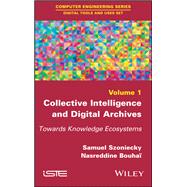DIGITAL TOOLS AND USES SET Coordinated by Imad Saleh
This book presents the most up-to-date research from different areas of digital archives to show how and why collective intelligence is being developed to organize and better communicate new masses of information.
Current archive digitization projects produce an enormous amount of digital data (Big Data). Thanks to the proactive approach of large public institutions, this data is increasingly accessible. Despite the recent stabilization of technical and legal frameworks, the use of data has yet to be enriched by processes such as collective intelligence.
By exploring the field of digital humanities, audiovisual archives, preservation of cultural heritage, crowdsourcing and the recovery of scientific archives, this book presents and analyzes concrete examples of collective intelligence for use in digital archives.









